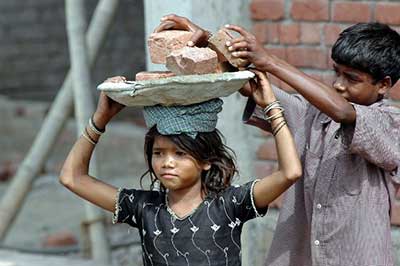Date: 25/01/2023
Relevance: GS-2: Government Policies and Interventions for Development in various sectors and Issues arising out of their Design and Implementation.
Key Phrases: National Child Labour Project (NCLP) Schools, Ministry of Labour and Employment, Vocational training, Sarva Shiksha Abhiyan (SSA), child labour, Special Training Centres, Project Societies.
Why in News?
- The fate of around 2,000 students is hanging in the balance with the Central government closing 65 National Child Labour Project (NCLP) Schools being run by the Ministry of Labour and Employment, in Andhra Pradesh.
What is the Issue?
- In April 2021, the Ministry of Labour issued orders merging the NCLP Schools in Sarva Shiksha Abhiyan (SSA). But, the process has not been fully completed till date.
- The School Education Department has enrolled a few students of the NCLP Schools, while others have remained dropouts for the last one-and-a-half years.
- A majority of the students, particularly girls, studying in NCLP Schools, also known as Special Training Centres (STCs), stopped going to schools.
What is Child Labour?
- As per the Child and Adolescent Labour (Prohibition and Regulation) Act, 1986, amended in 2016 ("CLPR Act"), a "Child" is defined as any person below the age of 14, and the CLPR Act prohibits employment of a Child in any employment including as domestic help.
- It is a cognizable criminal offence to employ a Child for any work.
- Children between the age of 14 and 18 are defined as "Adolescents" and the law allows adolescents to be employed except in the listed hazardous occupation and processes which include mining, inflammable substance and explosives-related work and any other hazardous process as per the Factories Act, 1948.
National Child Labour Project Scheme:
- Launch:
- Government initiated the National Child Labour Project (NCLP) Scheme in 1988 to rehabilitate working children in child labour endemic districts of the country.
- It is a Central Sector Scheme.
- Implementation:
- Under this Scheme the District Project Societies (DPS) are set up at the district level under the Chairmanship of the Collector/District Magistrate for overseeing the implementation of the project.
- The NCLP Scheme seeks:
- To eliminate all forms of child labour through:
- Identification and withdrawal of all children in the Project Area from child labour,
- Preparing children withdrawn from work for mainstream education along with vocational training;
- Ensuring convergence of services provided by different government departments/agencies for the benefit of the child and their family;
- To contribute to the withdrawal of all adolescent workers from
Hazardous Occupations / Processes and their skilling and integration
into appropriate occupations through
- Identification and withdrawal of all adolescent workers from hazardous occupations/processes,
- Facilitating vocational training opportunities for such adolescents through an existing scheme of skill development;
- Raising awareness amongst stakeholders and target communities, and orientation of NCLP and other functionaries on the issues of 'child labour' and 'the employment of adolescent workers in hazardous occupations/processes'; and
- Creation of a Child Labour Monitoring, Tracking and Reporting System.
- To eliminate all forms of child labour through:
- The Target group:
- The project societies are required to conduct surveys to identify children working in hazardous occupations and processes.
- These children will then form the target group for the project society.
- Of the children identified those in the age group 5-8 years will have to be mainstreamed directly into the formal educational system through the SSA.
- Working children in the age group of 9- 14 years will have to be rehabilitated through NCLP schools established by the Project Society.
- Rescue:
- NCLP Scheme was envisaged to run the STCs for child labour who were rescued from brick kilns, sand quarries, construction sites, shops and other establishments, dropouts and never enrolled children.
- Vocational Training:
- Vocational training was part of the curriculum in STCs and the instructors imparted training in embroidery, tailoring, bangle-making, Kalamkari bags, paintings, sarees designs, beautician, craft and other courses.
- Self-employment:
- Under the self-employment programme, skill development courses were conducted in making surf, phenol, liquid blue, pain balm and hair oil, for the children and their mothers.
- Stipend:
- The government used to pay ₹400 per child as a stipend every month, and serve Mid-Day Meals, school uniforms and books for each student.
Conclusion:
- According to reports, most dropout students have turned into child workers again.
- The government should have taken a smoother route to merge the NCLP schools into Sarva Shiksha Abhiyan (SSA) so that this dropout could be arrested.
- There is a need to plan a campaign to create awareness among the students and sensitise the parents on the importance of resuming studies.
- The department should realise the gravity of the situation and take effective steps to help children return to school.
Source: The Hindu
Mains Question:
Q. What are the reasons for child labour in India and what steps the government has taken to curb child labour? Discuss.






















